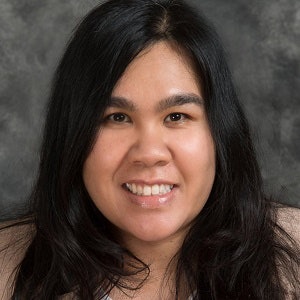Marking its 20th year, the National Survey of Student Engagement (NSSE) shows positive trends, notably that the percentage of first-year students engaging with professors about topics other than coursework has increased as much as 10% from 2004 to 2019.
The latest survey shows that first-year students are now talking more with their professors about career plans and course topics outside class, and working more with faculty on activities outside coursework, compared with in 2004.
“This suggests that, by and large, faculty who teach first-year students have devoted more effort to having meaningful conversations with students outside of the classroom — a form of engagement that helps to socialize new students, promotes their persistence and facilitates their ongoing development,” said the survey. “It also suggests that institutions have intentionally structured orientations, career services, and support units to connect students to the resources they most need.”
Faculty and student views about these interactions are quite similar. There has been an increase of early interventions rather than leaving it to the students or waiting until a crisis point, said Dr. Alexander C. McCormick, director NSSE and associate professor of educational leadership and policy studies at Indiana University.
 Dr. Alexander C. McCormick
Dr. Alexander C. McCormickWhile interaction with faculty has gone up, the percentage of first-year students who spend more than 15 hours per week preparing for classes has also increased within the past 15 years.
This is good news for higher education institutions because NSSE analyses have also shown that the amount of time first-year students spend in academic preparation correlates with institutional retention and graduation rates.
For its latest survey, Engagement Insights: Survey Findings on the Quality of Undergraduate Education, NSSE, based at the Indiana University Bloomington School of Education, surveyed first-year and senior students in the spring of 2019. As many as 531 institutions, 40 of which were outside the U.S., took part.
The NSSE debuted in 2000 as an experiment to better understand practices that truly matter to student learning and how data can guide the development and implementation of effective practices. That first year, 276 bachelor’s degree-granting colleges and universities in 47 states and the District of Columbia participated.
“It gives us a good overall snapshot of the state of U.S. higher education,” said McCormick. “We get really good representation from different types of institutions. It allows us to take the pulse of the student experience. From the perspective of the participating schools, we give them reports and allow them to benchmark against … like institutions.”
McCormick said participating schools have said the NSSE provides an opportunity to explore assumptions. Some administrators are surprised by the results, which at times are contrary to assumptions on issues of engagement, so NSSE serves as a catalyst for conversations.
For instance, advising has emerged as a key point. More than half of both first-year students and seniors met with an advisor, faculty member or success coach to discuss academic interests, course selections or academic performance. Those seniors who experienced high-quality advising felt that college contributed to their job-readiness and skills. As much as 93% of faculty said they felt comfortable advising students and 70% said they would feel comfortable training or mentoring others in advising.
“I do think it’s helpful to get some hard data that can be used as input to those conversations about mentoring and advising,” said McCormick. “We offer what we call topical modules. Everybody gets the core NSSE survey and then we let schools choose up to two modules to drill down on a topic of interest. We’ve been doing that since 2013.
“Since we started doing that, the module on academic advising has been either the most or second-most popular module. That says to me that schools are really concerned about advising and they want to understand it better and be able to track their performance,” he added.
Another trend that has emerged between 2004 and 2019 is that students increasingly rated the emphasis on diverse interactions as substantial, with the percentage rising more than 10 points for both first-year students and seniors, and most of the increases in the first half of the time span. For example, seniors’ perceptions of substantial institutional emphasis on diverse interactions increased to 55% from 43%. And support for helping students manage their nonacademic responsibilities, such as work or family, increased for first-year students and seniors. For example, seniors’ perceptions increased from 23% to a high of 33% before leveling off in recent years.
“Such results are encouraging considering the changing demographics of higher education, with historically underrepresented and nontraditional-age students enrolling in larger numbers,” said the survey.
Supportive environment and quality of interactions are in fact two of NSSE’s 10 engagement indicators that have the strongest positive correlations with persistence. And students who persisted exhibited higher levels of financial well-being, belonging and safety, which the report notes as an indicator of the importance of monitoring and enhancing these aspects of the student experience.
How do institutions use this data? Participating institutions receive their reports and can also access an online interface with their data, so they can analyze it independently in combination with their own institutional data. For 2019, 84% of participating institutions downloaded their data files and 93% downloaded the electronic copies of reports.
Take the case of Manhattan College — provost and executive vice president Dr. William Clyde said the report provides data central to the college’s mission on topics such as service learning, academic quality, engagement, diversity and inclusion. The college has participated in the surveys in all but two years since 2008.
“Once the results come in, we’re able to use that in a lot of our committee meetings, especially our retention committee, dean’s council and student life directors,” said Dr. Rani Roy, Manhattan College associate provost and assistant vice president for student and faculty development. “We can use it to plan how we want to engage groups going forward.”
 Dr. Rani Roy
Dr. Rani RoyAfter a previous NSSE report, for instance, Roy said Manhattan participated in the academic advising module. “We have recently done a self-study external review on advising based on our initial NSSE results,” she said. “We’re hoping the next time around to use NSSE to look at our engagement with advising.”
Diversity is also integral to Manhattan’s mission and NSSE results have helped in delivering the mission most effectively.
“We have a topical module on inclusiveness and engagement with diversity,” said McCormick. “We signal by our content that these are important issues. Giving people concrete results gives them an opportunity to [act on] it.”
Administrators analyzed high-impact practices with different populations and invested in programming accordingly.
“We want to help all groups succeed, but especially our underrepresented groups and our first-generation college students,” said Roy.





















